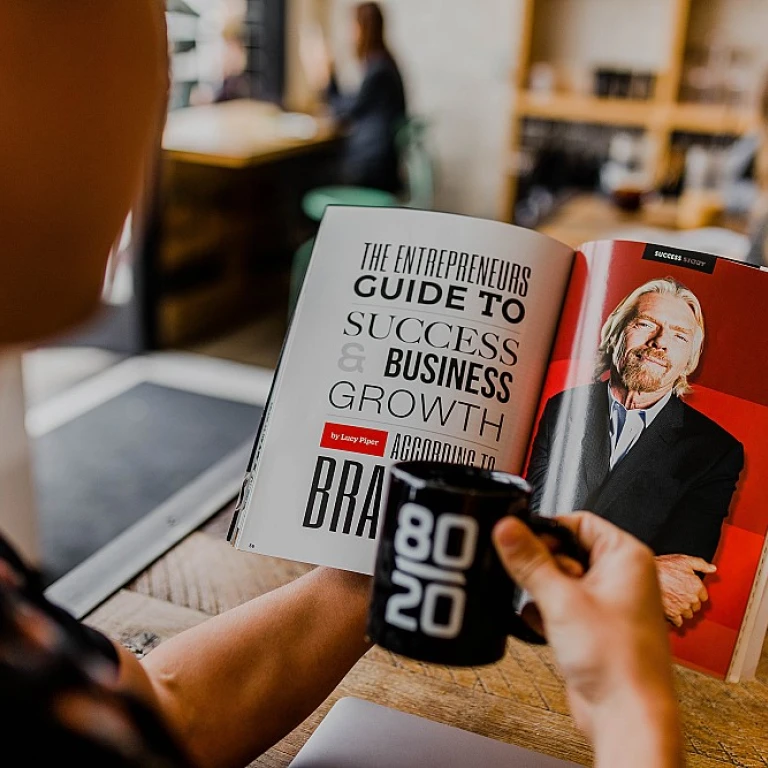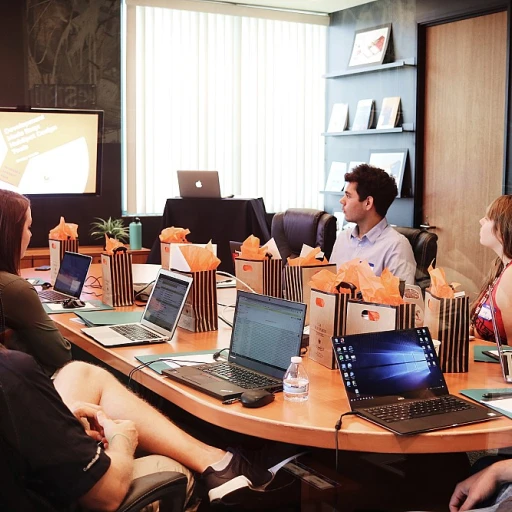
Understanding Growth Mindset in the Workplace
Fostering a Culture of Continuous Learning
In today's fast-paced world, understanding the concept of a growth mindset within the workplace is pivotal for organizations aspiring to thrive. By cultivating an environment where learning and development are integral, leaders can encourage employees to embrace challenges and pursue continuous improvement. The growth mindset theory, popularized by psychologist Carol Dweck, differentiates between individuals who believe abilities can be developed (growth mindset) and those who view them as static (fixed mindset). For organizations, fostering a mindset culture can mean the difference between stagnation and progression. Creating an environment where team members feel empowered to learn and innovate leads to long-term success. Leaders play an instrumental role in developing a growth mindset culture. Effective leadership involves nurturing opportunities for growth and embracing learning challenges to drive innovation. By prioritizing leadership development, organizations can effectively promote leaders who champion continuous improvement and guide teams towards organizational goals. Moreover, leaders should focus on cultivating growth by encouraging open dialogue and providing constructive feedback. This approach not only supports individual improvement but also bolsters team dynamics and collaborative success. Micromanagement practices can often hinder innovation and personal development, thus it's essential for leaders to create a culture that emphasizes autonomy and creativity. Ultimately, organizations that embrace continuous learning and provide their employees with opportunities for growth stand to benefit from a motivated, skilled, and agile workforce ready to tackle any challenges that come their way. This positive cycle of learning and growth sets the stage for employee satisfaction and overall organizational success.The Leader's Role in Promoting Growth Mindset
Encouraging a Growth-Oriented Environment
Creating a culture where growth, learning, and continuous improvement are at the forefront is a key responsibility for leaders. A growth mindset is not just about individual development; it involves the entire team aligning with the organization's goals of innovation and success. Leaders play a pivotal role in embedding this mindset into the fabric of the organization. Leaders must actively create an environment where employees feel motivated to embrace challenges and seek opportunities for growth. This involves recognizing the importance of continuous learning and development initiatives that encourage team members to step out of their comfort zones. To foster this environment, leaders should:- Model Growth Mindset Behaviors: Leaders must embody the mindset they wish to see in their teams. This means demonstrating adaptability, a willingness to learn, and openness to feedback and challenges.
- Provide Constructive Feedback: Feedback is an essential tool for growth. Leaders should prioritize delivering constructive feedback that guides employees towards improvement, allowing them to learn from mistakes and successes alike.
- Cultivate Safe Spaces for Innovation: Encouraging risk-taking and experimentation without the fear of failure fuels creative problem-solving and innovation. A safe environment where employees can voice ideas and take calculated risks is fundamental.
Effective Communication and Feedback Mechanisms
Fostering a Constructive Dialogue
Creating a culture where feedback serves as a conduit for growth and learning is crucial in achieving organizational success. Leaders play a pivotal role in cultivating an environment where effective communication is prioritized, encouraging continuous feedback and ultimately fostering a growth mindset among employees. In numerous organizations, feedback is often limited to formal reviews or performance evaluations; however, truly innovative teams embrace challenges by integrating continuous and constructive dialogue into their daily routines.
For team members to thrive in a growth mindset culture, leaders need to clearly communicate their expectations and promote active listening. This entails not only providing feedback but being receptive to it, ensuring that communication flows both ways. Employees feel more valued and engaged when they are part of a team that actively listens and responds to their ideas and concerns. To truly engage a culture of development, it's important that leaders promote an open dialogue where employees feel comfortable sharing their perspectives without fear of judgment.
Benefits of Continuous Feedback
The benefits of integrating continuous feedback are manifold. It allows for the identification and resolution of issues in real time, leading to more efficient problem-solving and greater potential for innovation. When this approach becomes standard within a team, it contributes not only to individual growth but also to overall team development. As a result, opportunities for learning are frequent, and successes are built upon, creating an environment of continuous improvement.
Furthermore, effective feedback mechanisms enable organizations to identify the particular needs of their employees, providing specific growth opportunities tailored to individual strengths and areas for improvement. This personalization fosters a sense of belonging and commitment among employees, aligning their personal development with organizational goals.
Implementing Feedback Mechanisms
To effectively integrate feedback as a cornerstone of growth, leaders can adopt various practices. Encouraging regular "check-ins" and creating forums for idea sharing are some popular methods to maintain open lines of communication. Implementing regular training sessions focused on giving and receiving feedback effectively can also enhance overall leadership development.
It's worth acknowledging that adopting a new feedback culture within an organization isn't without its challenges. Transitioning gradually helps as both leaders and team members grow accustomed to new communication patterns, paving the way for a more productive and growth-oriented mindset. Adopting modern tools and platforms for feedback can also support this transition, facilitating a more seamless integration of feedback mechanisms into daily workflows. More insights on managing distinct work dynamics can be found here.
Training and Development Initiatives
Fostering Skills through Learning and Development
In cultivating a growth-oriented culture, organizations must prioritize training and development initiatives. A continuous learning environment not only enhances skill sets but also motivates team members to embrace challenges, facilitating both personal and professional growth. Offering regular and tailored learning opportunities allows organizations to create a culture that fosters continuous improvement. By doing so, employees feel valued and supported, which boosts their contribution to team success. Training programs should be aligned with leadership development to ensure new skills and knowledge are efficiently integrated into the workforce, driving a mindset culture where innovation and opportunities are frequently explored. Here are some strategies leaders can employ:- Develop learning modules that are accessible to all employees, regardless of their position or department. An inclusive approach breaks down fixed mindset barriers.
- Encourage job rotation and cross-functional collaboration. These practices allow employees to discover how different departments operate, while also being exposed to new problems and opportunities, enhancing problem-solving skills.
- Implement mentorship programs. Pairing less experienced employees with seasoned team members promotes knowledge sharing and develops leadership growth, ensuring a steady rise of future leaders within the organization.
Overcoming Challenges in Mindset Transformation
Transforming Mindset Amidst Challenges
Embracing a growth mindset requires courage, especially when faced with inevitable challenges. Leaders play a pivotal role in this transformation, acknowledging both the hurdles and the opportunities for growth. Understanding the difference between a fixed mindset and a growth mindset is essential. A fixed mindset limits potential, while a growth mindset empowers teams to embrace challenges and foster continuous learning and improvement. Common Challenges and How to Overcome Them:- Resistance to Change: Employees may become comfortable with established routines, viewing new initiatives as disruptions rather than opportunities. Leaders must communicate clearly and consistently about the benefits of a growth culture to instigate a positive shift in perception.
- Lack of Resources: Investing in training and development initiatives can seem daunting. However, providing adequate resources for learning and development is crucial. Leaders should prioritize these resources as investments in long-term success.
- Fear of Failure: Employees might fear that mistakes will negatively impact their status within the team. Cultivating an environment where constructive feedback is embraced can help mitigate these fears, encouraging team members to learn from failures and innovate without fear.
- Imbalance Between Short-Term and Long-Term Goals: Balancing immediate objectives with overarching growth goals is critical. Leaders must create an environment that supports both short-term achievements and long-term development, ensuring teams understand the strategic importance of both.












